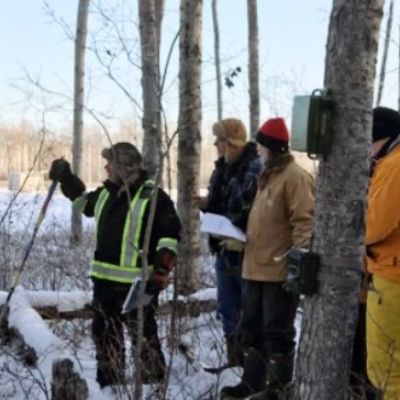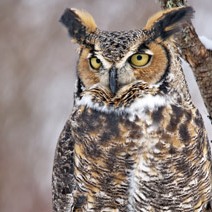
Rare Animals Monitoring
Categories: Wildlife Monitoring
Status: Completed
About the Project
The ABMI monitors rare animals in Alberta’s boreal forest.
The ABMI’s core biodiversity monitoring program tracks changes in groups of common plants and animals in order to understand how their populations might be changing over time. We also measure a variety of habitat characteristics and determine how our human footprint is changing over time, in order to identify relationships between human land use, habitat and species abundance, and when and where they exist.
But the core biodiversity monitoring program isn’t optimized for tracking changes in the populations of species that are rare or elusive; these species often aren’t fully captured by our core monitoring efforts, so the ABMI’s Rare Animals project was designed to address this gap.
The project was originally conceived and initiated through the Ecological Monitoring Committee for the Lower Athabasca (EMCLA). The EMCLA, a consortium of oil sands companies, government ministries, and agencies coordinated by the ABMI was established in 2010 with the goal of designing cost-efficient protocols to monitor rare and elusive vocalizing species, species that make sounds.
The project is focused on several vocalizing species: owls, amphibians, and a secretive marsh bird, the Yellow Rail, which is a species of Special Concern in Canada. The overall aim of the monitoring program is to understand these species’ status, habitat preferences, and distribution across the Lower Athabasca region.
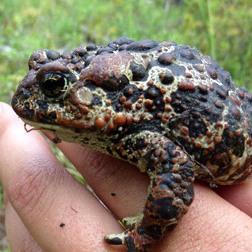
Western Toad
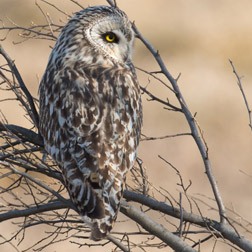.jpg)
Asio flammeus

Automated recording unit mounted on a tree in boreal Alberta
Our Approach
To monitor these vocalizing species, the project uses automated recording units (ARUs).
ARUs are sound recorders that can be deployed at remote locations and programmed to record at set time intervals from weeks to months in a variety of different, often remote, habitats. Weighing between three and seven pounds and able to record in temperatures ranging from below zero to +500C, these recorders are mounted on trees or other sturdy posts and offer enormous advantages when monitoring rare or elusive species:
- Increased species detection: Because they can be left in the field for extended periods and can be programmed to record anytime, monitoring owls, amphibians, and rare birds using ARUs provide better estimates of just how many species are in a given site than do traditional surveys.
- More accurate data: ARUs facilitate more accurate species identification than relying exclusively on human interpretation. With a permanent sound recording in hand, experts can verify species IDs, decreasing potential error in identification by observers and the stress of needing to accurately recognize calls in the field.
- Additional data collection: Because ARUs effectively record all other vocalizing species simultaneously, we now have information on other species, such as the rare Sedge Wren that are often found in the same habitat as the Yellow Rail, for example. ARUs can also record huge amounts of data, for example, the ABMI recorded 25 terabytes in one field season alone – that’s two and a half years of continuous sound files! As a result, Alberta ecologists have access to high-quality data on the abundance and location of 170 species of birds, amphibians, and other wildlife.
- Computer based processing: ARUs offer the possibility of computer-based processing. For example, automated song recognition analysis has been developed for the Barred Owl and for Yellow Rails, so that recordings can be searched for “hits” of this target species.
- Methodological standardization: The Rare Animals project team is working with the ABMI and industry partners to integrate ARUs into current monitoring efforts and to standardize methods across these agencies. The advantage of standardized methodologies is that it allows datasets to be pooled and compared between agencies.
- Safety: By limiting the need to send field technicians out at night to collect similar data, ARUs reduce safety and logistical concerns associated with traditional survey methods.
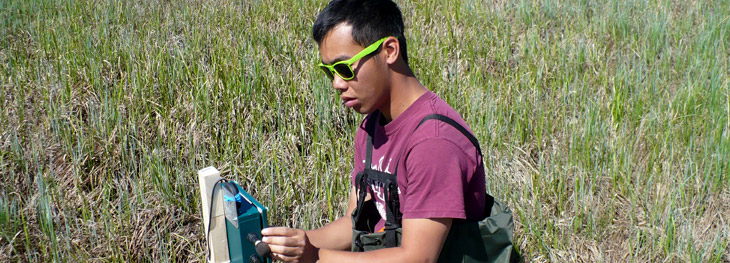
Field technician Dan Yip with an ARU.
ARUs facilitate more accurate species identification than relying exclusively on human interpretation. With a permanent sound recording in hand, experts can verify species IDs, decreasing potential error in identification by observers and the stress of needing to accurately recognize calls in the field.
Project Impact
The ABMI Rare Animals project can be used to inform acoustic species management, for example, species at risk monitoring and mitigation programs, reclamation planning and reporting, and conducting census at the lease-level to determine a more accurate species population census. The Rare Animals project is playing an important role in regional species monitoring efforts in the Lower Athabasca and can be used to determine where these rare vocalizing species are found and how best to minimize impact on these species.
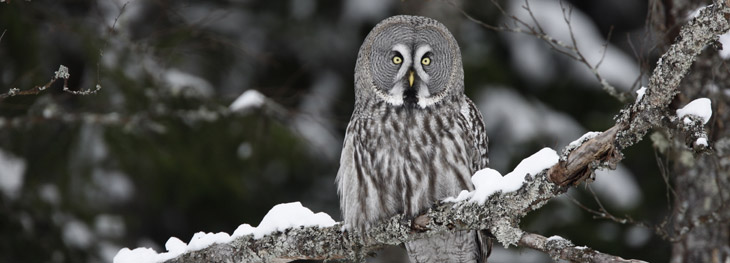
Strix nebulosa
NWSAR supports the acquisition of new and more accurate data related to caribou and deploys remote cameras and autonomous recording units to collect data on ungulates and predators in two Woodland Caribou ranges in northwestern Alberta.
Led by Alberta Environment and Parks and the Grande Cache Trails Working Group, this project’s goal is to collect information on recreational use and wildlife in the Willmore Wilderness Park and nearby public lands.
The ABMI’s Ecological Recovery Monitoring (ERM) project assesses ecological recovery of certified reclaimed oil and gas wellsites.
